Two average forces. A steady stream of snowballs is shot perpendicularly into a wall at a speed of . Each ball sticks to the wall. The figure shown below gives the magnitude of the force on the wall as a function of time for two of the snowball impacts. Impacts occur with a repetition time interval , last a duration time interval and produce isosceles triangles on the graph, with each impact reaching a force maximum . During each impact, what are the magnitudes of (a) the impulse and (b) the average force on the wall?
(c) During a time interval of many impacts, what is the magnitude of the average force on the wall?
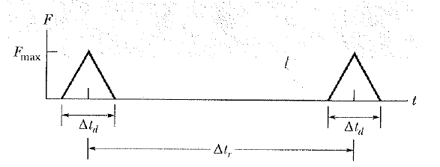
(c) During a time interval of many impacts, what is the magnitude of the average force on the wall?


Important Questions on Center of Mass and Linear Momentum
Jumping up before the elevator hits. After the cable snaps and the safety system fails, an elevator cable free-falls from a height of . During the collision at the bottom of the elevator shaft, a passenger is stopped in (Assume that neither the passenger nor the cab rebounds). What are the magnitudes of the (a) impulse and (b) average force on the passenger during the collision? If the passenger were to jump upward with a speed of relative to the cab floor just before the cab hits the bottom of the shaft, what are the magnitudes of the (c) impulse and(d) average force (assuming the same stopping time)?
A toy car can move along the axis, in the figure shown below. The figure gives , of the force acting on the car which begins at rest at time . The scale on the axis is set by In unit-vector notation, what is at
(a) and
(b) and
(c) what is at
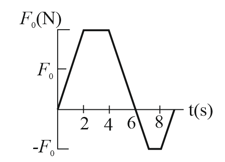
The figure below shows a baseball just before and just after it collides with a bat. Just before, the ball has velocity of magnitudeand angle Just after it is travelling directly upward with velocity of magnitude . The duration of the collision is . What are the(a) magnitude and (b) direction (relative to the positive direction of the axis) of the impulse on the ball from the bat? What are the (c) magnitude and (d) direction of the average force on the ball from the bat?()
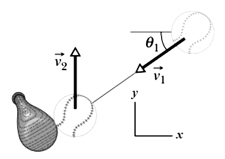
Basilisk lizards can run across the top of a water surface. With each step, a lizard first slaps its foot against the water and then pushes it down into the water rapidly enough to form an air cavity around the top of the foot. To avoid having to pull the foot back up against water drag in order to complete the step, the lizard withdraws the foot before water can flow into the air cavity. If the lizard is not to sink, the average upward impulse on the lizard during this full action of slap, downward push and withdrawal must match the downward impulse due to the gravitational force. Suppose, the mass of a basilisk lizard is . The mass of each foot is . The speed of a foot as it slaps the water is and the time for a single step is . (a) What is the magnitude of the impulse on the lizard during the slap? (Assume this impulse is directly upward.) (b) During the duration of a step. What is the downward impulse on the lizard due to the gravitational force? (c) Which action, the slap or the push, provides the primary support for the lizard or are they approximately equal in their support?
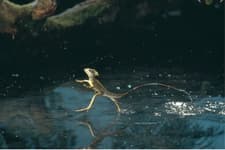
The figure below shows an approximate plot of force magnitude versus time during the collision of a super ball with a wall. The initial velocity of the ball is perpendicular to the wall. The ball rebounds directly back with approximately the same speed, also perpendicular to the wall. What is , the maximum magnitude of the force on the ball from the wall during collision?
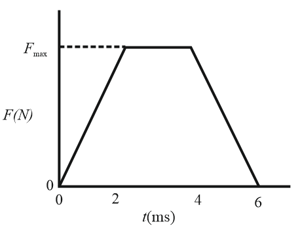
The overhead view of the figure below shows a ball with a speed of , strikes a wall at an angle of and then rebounds with the same speed and angle. It is in contact with the wall for . In unit vector notation, what are (a) the impulse on the ball from the wall and (b) the average force on the wall from the ball?

